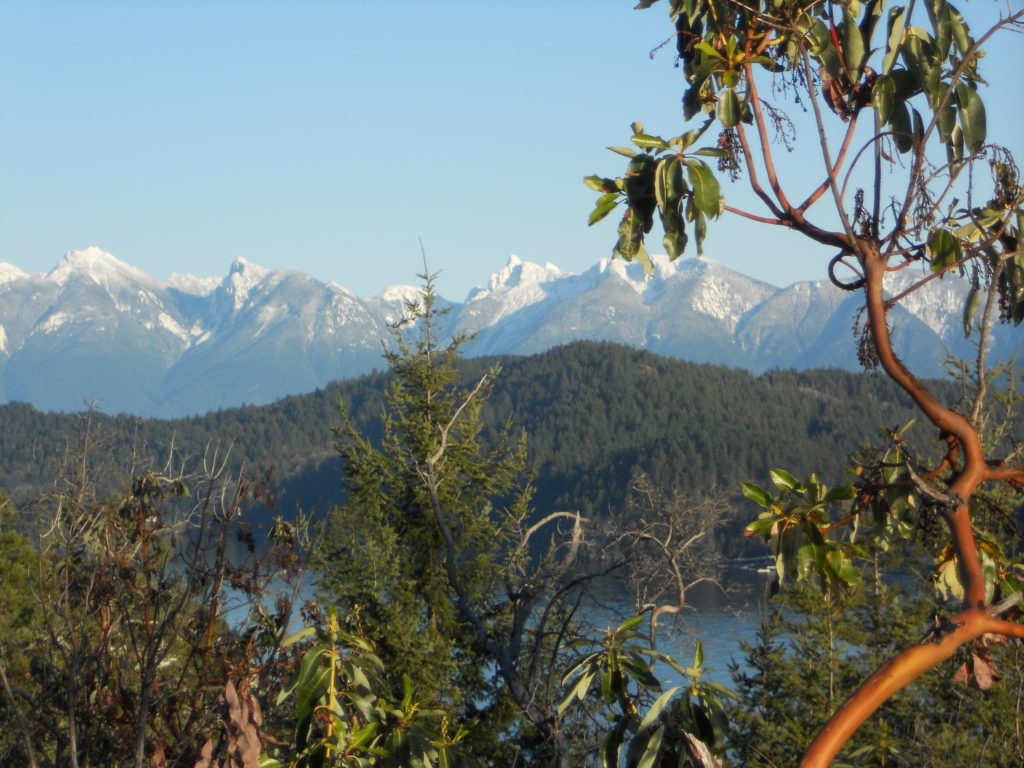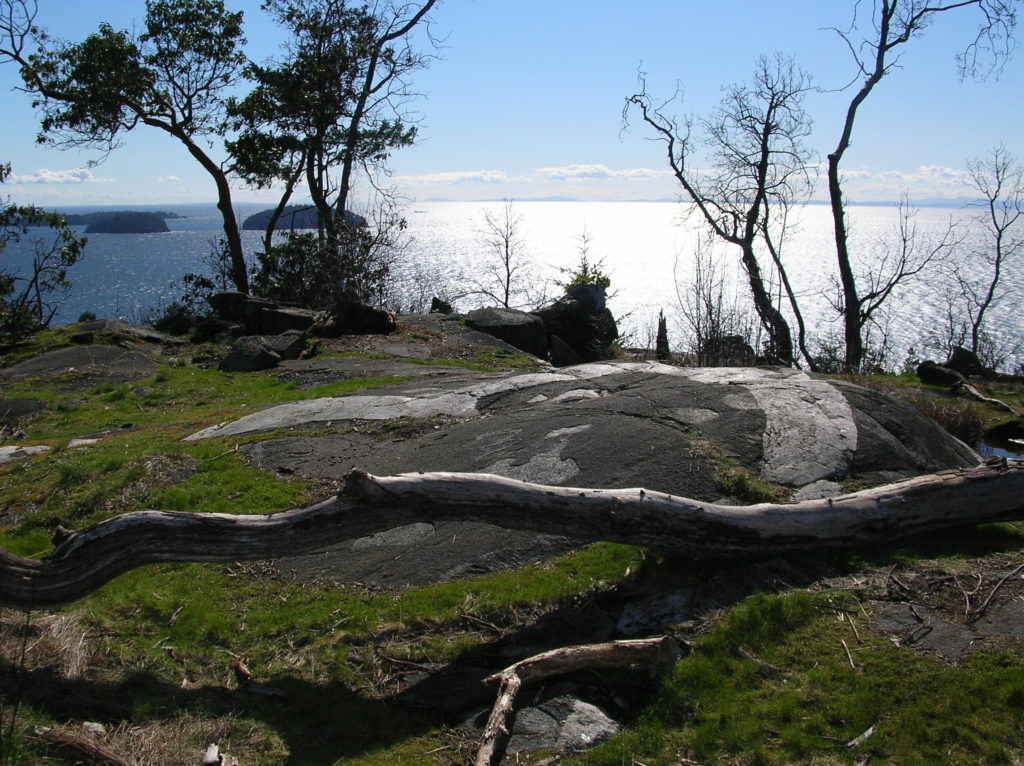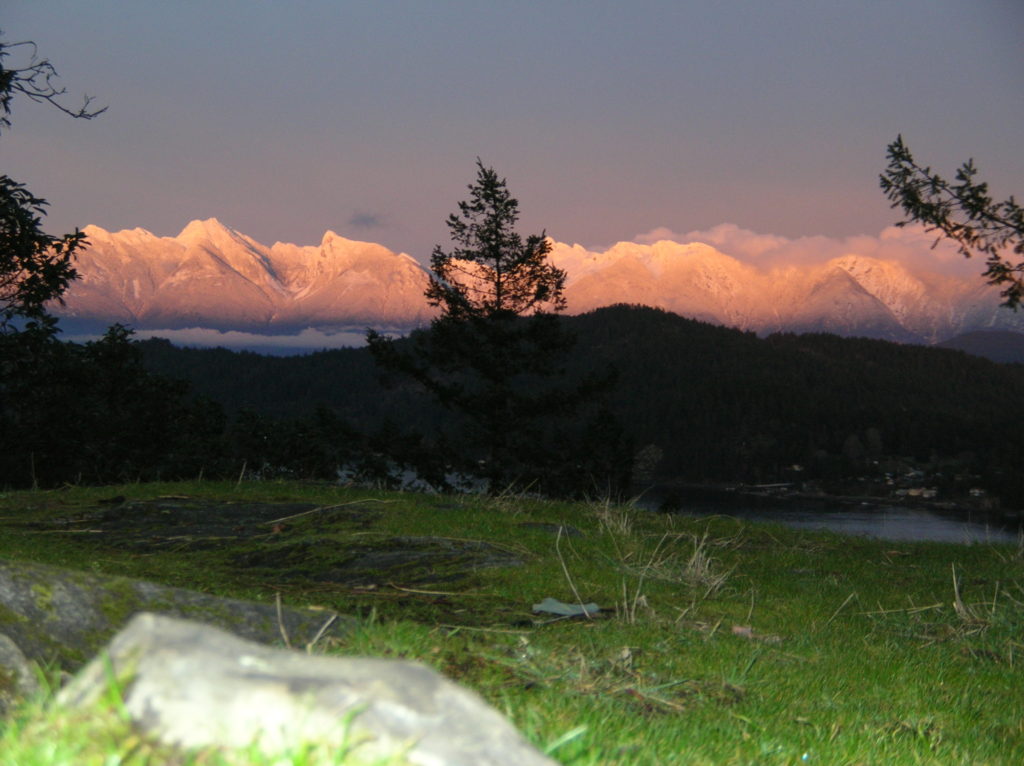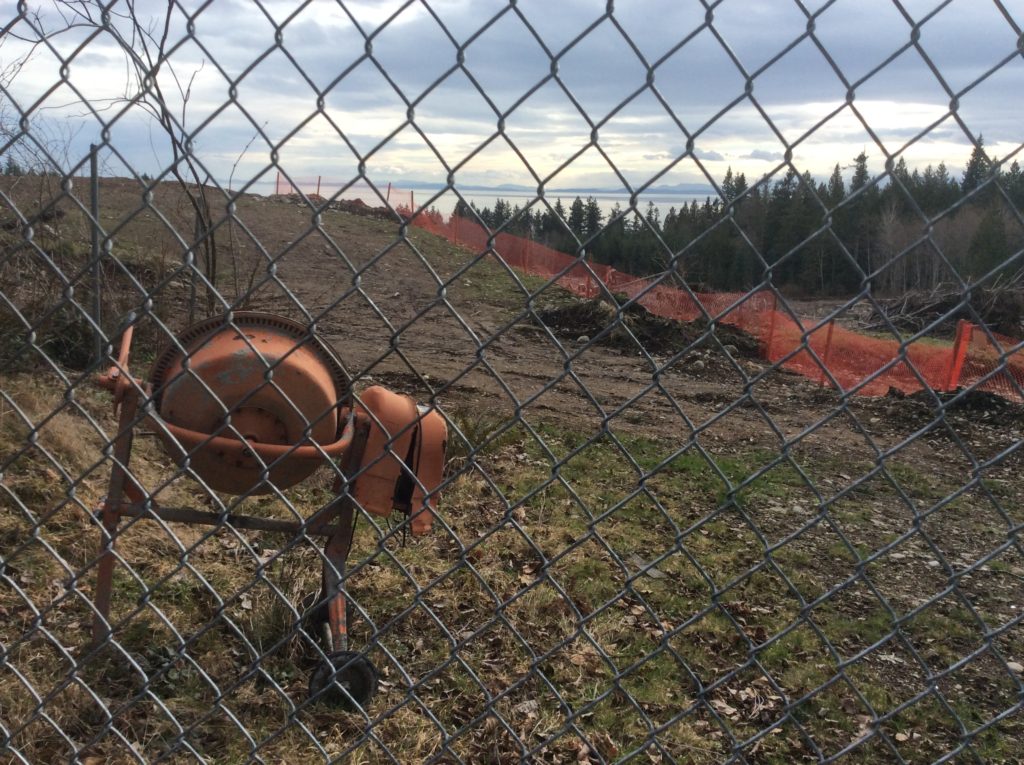Attempts to turn Block 7 into a public park go back to the early Eighties, thousands of citizens were involved

By N. Gaudry and L. Macklam
Edited by The Coast Clarion
Gospel Rock lands were and are in the territory of the Squamish First Nations.
By the 1900’s the B.C. Lands Registry surveyed 46.64 acres into Block 7. The rock on the ocean’s edge was named Gospel Rock in the early 1900’s when someone painted Scriptures on the outer rock face; it became a location for sermons and ceremonies.
For more than 120 years Block 7, while privately owned, has been used extensively by the public.
Mr. William Valentine Messenger owned Blocks 7, 6 and 3 for many years before his passing on June 22, 1979. He lived in a cabin at the bottom of Block 3 on Gower Point Road.
During his ownership the citizens of the area continued to use the trails on Block 7 for walking, picnics and contemplation. The cross on the top was a great lookout. People went to the rock on the ocean’s edge for the spectacular view while brave souls used it for jumping into the ocean.
According to locals who knew Mr. Messenger, he spoke of leaving Block 7 as a public park, but it never happened. When he passed the properties were left to Mr. Fred Child.

In the early 1980’s, when land development was increasing, many people in the community realized Block 7 should be preserved as a public park/undisturbed greenspace.
With enormous public support, several groups and non-profits sprang into action. Unfortunately, Mr. Child’s perception was that some in the community wanted him to donate the property rather than sell it. After his mother was confronted in a rude manner about the subject he closed off to the community.
Alas, there never seemed to be political will to buy Block 7 for a park; the “movers and shakers’ on the lower Coast did not support this dream. The grassroots movement was on its own to preserve the land.
As years went by, the property was bought and sold several times and more than one owner made a serious attempt to develop it.
Mr. H. Killam, the next owner after Mr. Child, logged the top of Block 7, leaving only the arbutus trees. As a result, local youth started to call the logged area “Little Africa”.
Mr. Killam also drilled holes to blow up the rock by the water but a brave mother, with a baby on her back, quickly stopped that. That night, a group of committed community members mixed expanding concrete and filled in the 30 some holes to save this precious spot for our future.

Attempts to purchase Block 7 continued. Thousands of people have worked to save this property for the benefit of all. Videos were made, artists painted, songs were written, fundraisers held and letters sent; land conservancies came on side. But the politicians and the “movers and shakers” remained silent; they did not help in any significant way.
Then, when Barry Janyk was mayor of Gibsons, the Town proposed to create a Gospel Rock Neighbourhood, involving more properties than Block 7. However, most of the owners of the other blocks did not support the idea and the plan went nowhere.
In 2012, when J. Wayne Rowe was mayor of Gibsons, a huge public hearing about a new Gospel Rock Neighbourhood Plan which allowed for 1,100 housing units filled Elphinstone School gymnasium. The meeting lasted until late and was recorded by Coast Cable. Speaker after speaker opposed the idea and passionately spoke about Block 7.
The Town of Gibsons did not heed the public pleas and passed the Gospel Rock Neighbourhood Plan, knowing full well it would forward development.
Block 7 had several more owners. One passed away, one went into receivership, there was another owner, and finally an investor with purportedly deep pockets purchased Block 7.
“Back to Nature, Returning to What’s Real,” was the slogan of his marketing team. Most upsetting.

The property has now been logged on top and cleared for building. But at this time, no infrastructure is in place, nor has construction started. There is controversy.
Instead of a “fast-paced trendy village” complete with hotel, commercial areas and noise and artificial light, let’s change course. There is still time. The forest will regenerate, just as it did after Mr. Killam logged it in the Eighties.
Together we can be creative to acquire the funds for purchase and have a different outcome for the Gospel Rock lands. If we have the will, there may be an opportunity to save this precious gem for the ultimate benefit to all life: for humans, for flora and fauna, for the Earth!
Preserving this space would of course be wonderful! Please keep me informed of any follow-up.
Please let me know how!
I will do whatever I can to preserve this magical place
Too bad about the misunderstanding with Mr. Child, as, back in the ’80’s, land was so much cheaper here than it is now. The Town could have afforded it much more easily back then. The inflated price of land causes so many societal problems.
asset or artificial gains.
Tax base is of maintainance to infrastructure, if a new place has no infrastructure, then there is only one solution, to get the existing structure, that can hardly build anything new, like a road or a dam, or even see austerity, and ask for higher tax and larger loans to create the provisions to the ‘new idea’ in an unacceptable scale, unnaceptable public cost, and the idea that more, means somehow more benefits during the most debt ridden society ever, mostly just one pay check from disaster.